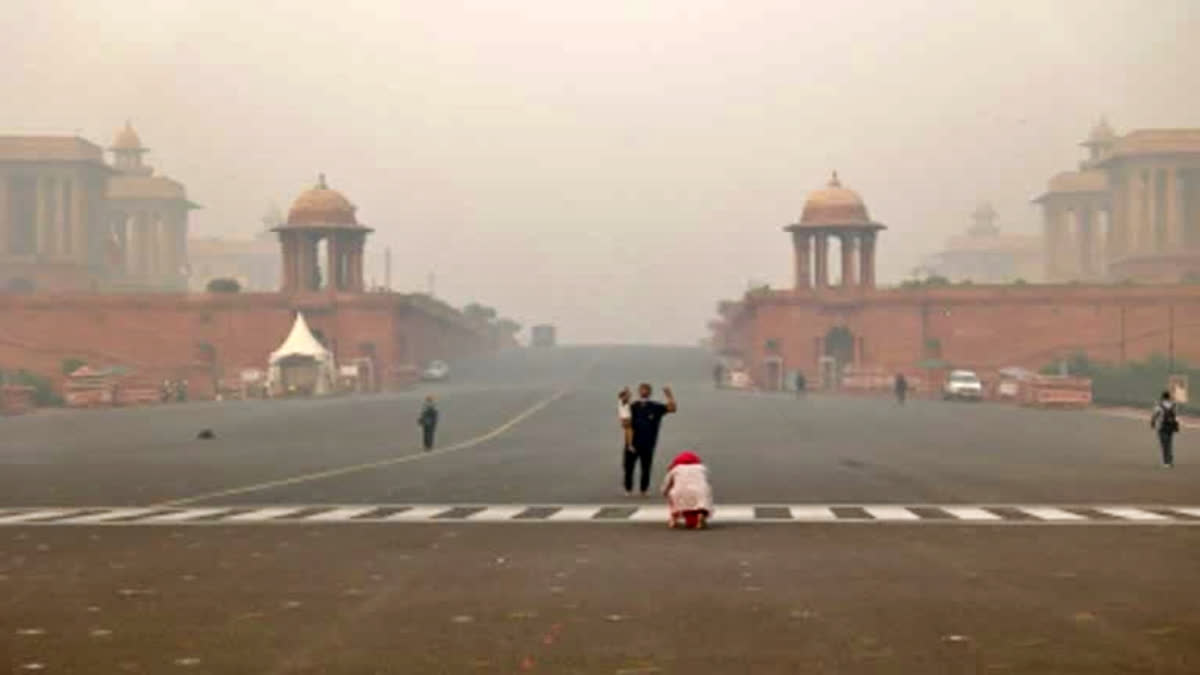New Delhi:A new analysis by the Centre for Science and Environment (CSE) released here on Thursday has laid bare the abysmal state of the country’s air quality monitoring network. According to it, of India’s 4,041 census cities and towns, a mere 12 per cent have air quality monitoring systems.
What’s more, only 200 of these cities monitor all six key criteria pollutants. This is when compliance with the National Ambient Air Quality Standards (NAAQS) and clean air targets under the National Clean Air Programme (NCAP) requires robust air quality monitoring. The analysis points out that nearly 47 per cent of the country’s population remains outside the maximum radius of the air quality monitoring grid (manual and real time combined), while 62 per cent is outside that of the real-time monitoring network.
"Limited air quality monitoring makes it challenging to identify the non-attainment status of a vast number of towns/cities and regions and also impedes effective evaluation of clean air action and improvement in air quality needed for evaluation of performance of clean air action, especially under the 15th Finance Commission grant. More harmful PM2.5 and ozone are not considered for compliance under NCAP due to limited monitoring and data. It is necessary to ensure more equitable distribution of monitors and adoption of hybrid monitoring with a standardised and certified air sensor network and satellite-based monitoring with appropriate protocols for maximum and cost effective coverage of population to support action,” said Anumita Roychowdhury, executive director, research and advocacy, CSE.
Also read: IIT Madras team develops IoT-based method for mobile pollution monitoring
“The current monitoring network also faces the challenge of inadequate data generation, lack of data completeness and poor quality control of monitoring. This makes air quality trend assessment difficult to establish compliance with clean air targets. The current urban monitoring grid is highly concentrated in a few big cities and there are vast areas in other regions with no monitoring. This needs to be rationalised to cover a wider population and habitats to support the implementation of clean air action plans, provide information to public about the daily risks and design emergency response and longer-term action,” said Avikal Somvanshi, senior programme manager, urban lab, CSE.
Key findings of the analysis
The number of manual monitoring stations has doubled since 2010. There were 411 manual stations operating in 2010. According to the CPCB website, currently, there are 883 operating manual stations in 379 cities and towns in 28 states and seven UTs of the country. The CPCB has discontinued its practice of publishing station-wise monitoring data after the NAMP 2020 report; in 2020, the NAMP report had monitoring information from about 711 stations (despite 818 stations listed on record for that year).
The number of real-time monitoring stations has grown 20-fold since 2010. There are 409 real-time CAAQMS stations spread across 209 cities/towns in 27 states and four UTs. Of these, 77 stations were added in 2022. As of February 22, 2023, 23 new stations and 18 new cities have been added to the network, making it 423 stations in 221 cities. It is not always possible to assess actual operating stations. For example, at least four stations have not reported any monitoring data in the last few years. These include Airoli in Navi Mumbai, Bandra in Mumbai, PWD Grounds in Vijaywada and Nishant Ganj in Lucknow.
Only 476 of 4,041 cities/towns have air quality monitoring stations (manual or real time): A majority of these (267 cities) have manual stations; 98 cities have only real time stations; and 111 cities have both manual and real time stations.
Air quality monotoring grid falls short of the recommended guidelines: The monitoring capacity as of January 1, 2023 barely adds up to 6-8 per cent of the minimum recommended as per the guidelines of the Indian Standard 5182 Methods for Measurement of Air Pollution-Part 14. This recommends a minimum number of monitoring stations for cities and towns to be set up as per their population size and type and level of pollutants. The number of stations increases with rise in population, and this is based on factors defined in the standard itself.
